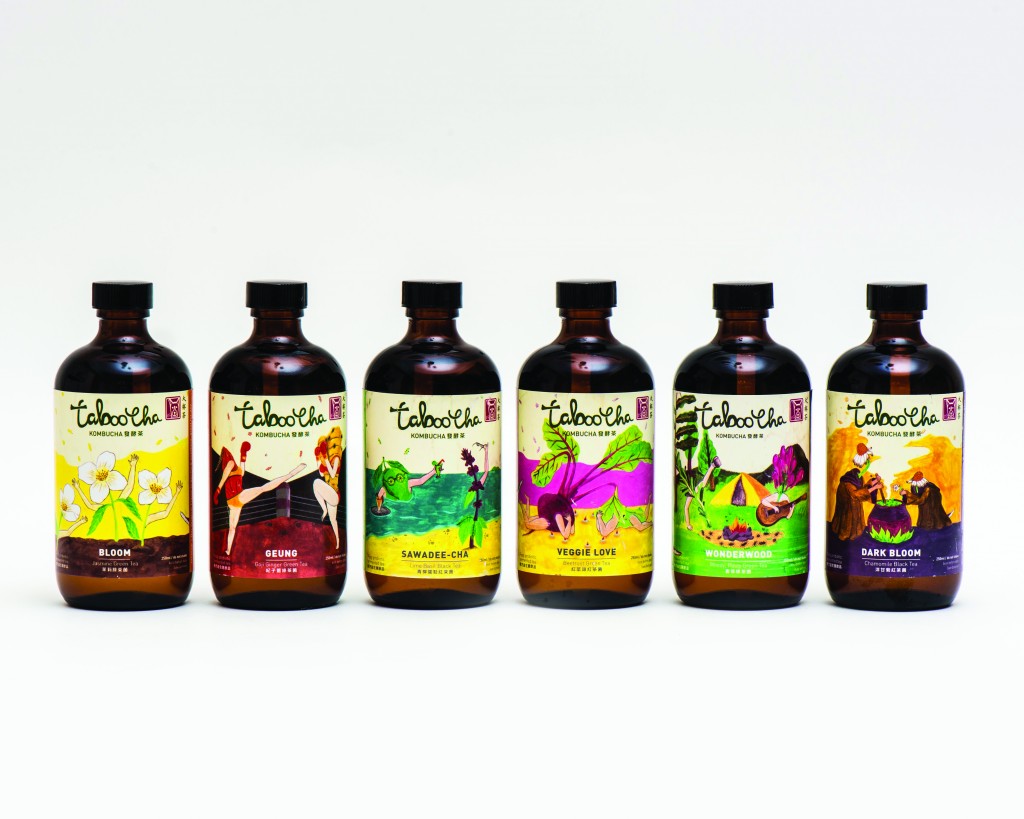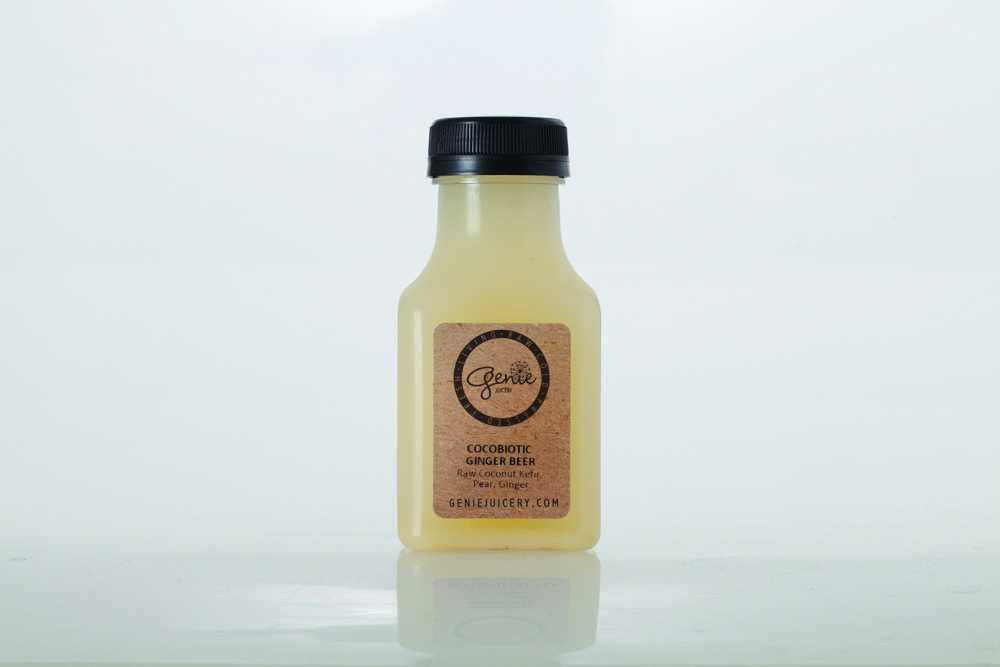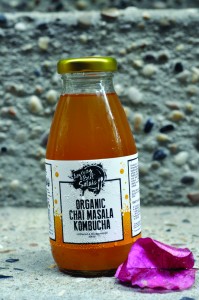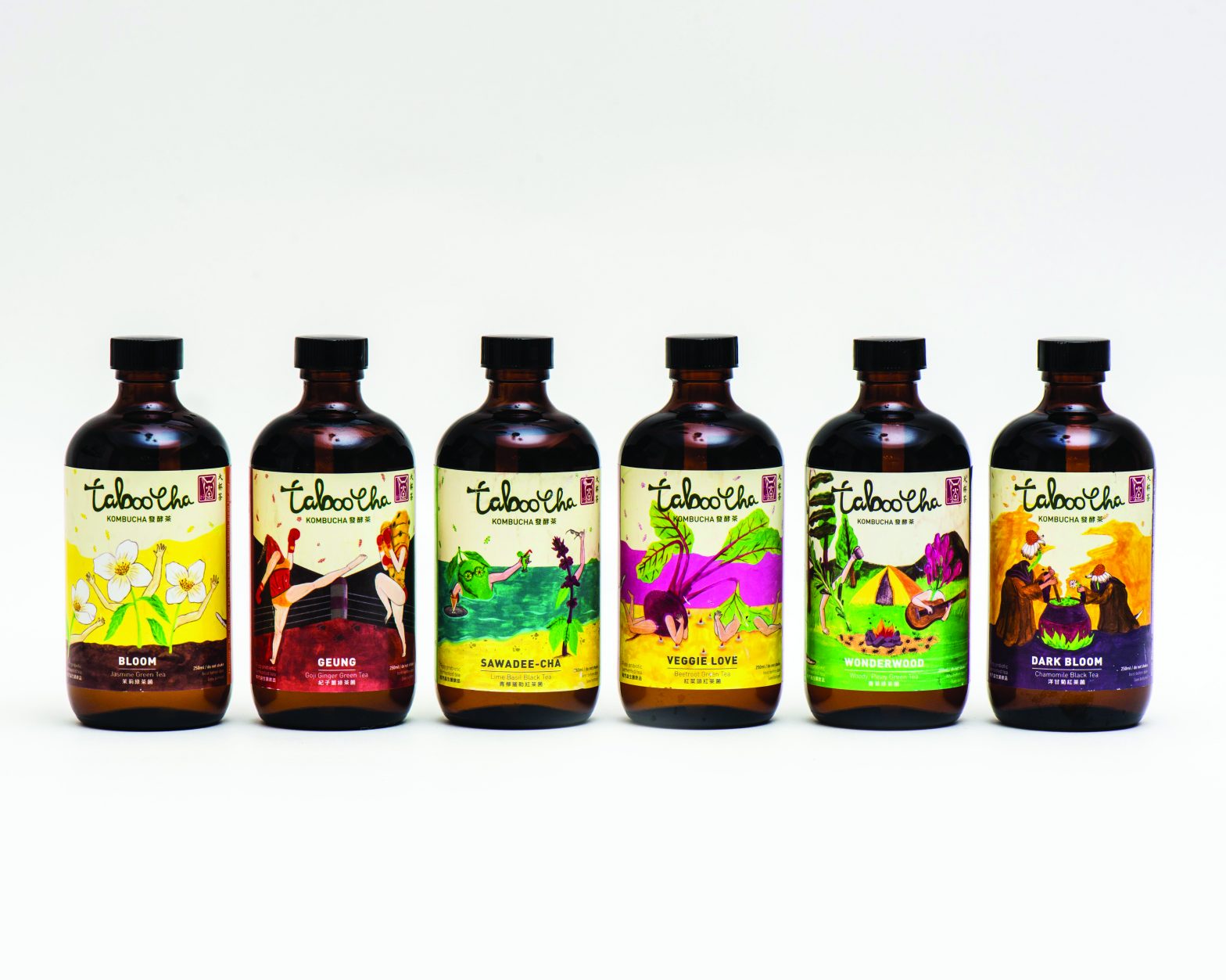Always wanted to give fermenting a go, but don’t know your SCOBY from your elbow? Shan Shan Feng gets the lowdown on fermented drinks.
What is Fermenting?
Fermentation is the process by which sugar and starches are broken down into alcohol and acids by microorganisms such as bacteria and yeast. What you’re left with is a drink (or food) that contains probiotics: beneficial, gut-friendly bacteria that help us maintain a healthy digestive system. Yoghurt is the most common food containing a live culture, but in recent years kombucha (made from sugar and tea) and kefir (a fermented milk or sugared water drink made with kefir grains) have also become popular.
Make Your Own Kombucha
Jacqueline Renee Cohen offers regular fermenting classes as part of her healthy living site, Lantaumama.com. She teaches us how to make our own kombucha.
- A 1.5-2 litre glass jar
- One-litre bottles for storing your kombucha once made
- A plastic funnel
- A thin cotton or muslin cloth with an
- elastic band
- 1 litre of boiled filtered water
- Two teaspoons or one teabag of black, white, or green tea
- four tablespoons of sweetener (i.e. coconut sugar, organic cane sugar or a combination of both)
- Kombucha to use as a starter – you need 100ml per litre; at least 10 percent of the final amount (use unflavoured regular kombucha)
- A SCOBY (see below)
Instructions:
- Brew the tea. Cool until lukewarm, then add your sweetener and mix well.
- Once the tea is cool, put it in your glass fermenting jar and add the starter (at least 10 percent)
- Gently place your SCOBY on top, and then cover with the cloth secured with an elastic band to keep bugs away.
- Place the kombucha to ferment on a solid shelf that does not move or shake.
- Taste after seven to 10 days. It should be ever so slightly sour and possibly a bit effervescent. If it still tastes sweet, leave it for another day and keep tasting each day until it reaches a flavour you like.
- When it’s done, gently remove the SCOBY and set at least 10 percent of this batch of kombucha aside to use as starter for the next batch.
- Pour the remaining kombucha into bottles (using the funnel) and refrigerate to enjoy.
Turbo-Charge your ‘Buch
Give your kombucha a kick by infusing it with natural flavours. Try these blends:
Lovin’ Lemon: Mix with freshly-squeezed lemon juice and stick a stalk of lemongrass in the bottle
Berry ‘Bucha: Blend with berries and a squeeze of lemon
Spice is Nice: Half-fill a bottle with kombucha and then top it up with your favourite herbal tea
Ginger Zing: Blend with a lot of ginger and serve straight or with sparkling water
What the heck is a SCOBY?
SCOBY stands for Symbiotic Culture of Bacteria and Yeast. It feeds on sugar and tea and looks like a large flat gelatinous mushroom. It can can be smooth or bumpy and vary from white to brown depending on the type of tea used. The SCOBY is known as a “mother” and will produce daughter SCOBYs that multiply on top on the kombucha. If you don’t have a SCOBY, you’ll need to make your own.
You will need:
- One bottle of raw plain (unflavoured) kombucha
- Sweetened tea: one litre of boiled filtered water to two teaspoons or a tea bag of black, white or green tea, plus four tablespoons of sweetener (such as cane or coconut sugar)
Instructions:
- Make 250ml of sweetened tea as per the recipe above.
- Let the tea cool to room temperature and put in a glass jar. Add the kombucha so you have 40-50 percent kombucha and 50-60 percent sweet tea.
- Cover with a cloth and secure with an elastic band. Let it sit for a few weeks, and watch your SCOBY develop.
- Once developed, use this new SCOBY and the kombucha you have just made as the “starter” for your next batch of kombucha.
Make Your Own Kefir
We speak to Louise Kane Buckley of Loula Natural (www.loulanatural.com) for a step-by-step guide on how to make our own kefir, as well as some tips for first-timers.
- One or two large glass jars
- A plastic sieve or strainer
- A plastic bowl
- A thin cotton or muslin cloth with an elastic band
- One litre of liquid (milk, coconut milk, sugar water, coconut water or diluted juice)
- two tablespoons of kefir grains (milk or water, depending on the type of kefir you’re making)
- Optional: fruits and spices to flavor your kefir.
Instructions:
- Pour one litre of liquid into your glass jar, add the kefir grains and stir.
- Cover the top with a cloth and secure it with an elastic band.
- Leave in a warm place for 12-24 hours (20-48 hours in winter or when making water kefir) – this is the first fermentation. During this period, stir periodically (especially with coconut milk and almond milk) and taste occasionally. It will be done when it tastes slightly sour.
- When you like the taste, shake the grains vigorously (the more you agitate the grains, the thicker the mixture) and then strain the kefir grains with a plastic sieve/strainer.
- Pour the kefir into the second glass jar. You can drink it now, or add some flavor to it with a second fermentation. Add your ingredients to the kefir, close the cap of the jar or cover with cloth and let it ferment for 12-24 hours in a warm place until you like the taste. Try lemon, honey, ginger and turmeric, for example.
- Once you’re satisfied with the taste, put in the fridge – this stops the fermentation process.
Tips & Tricks
- Use plastic utensils instead of metal; the metal may corrode due to the acidity of the kefir.
- The longer you leave it to ferment, the more acidic it will taste. If it’s too acidic, you can dilute it with some liquid.
- The hotter and more humid the environment, the faster the fermentation.
- You can reuse the grains by keeping them in the fridge.
- Personalize it! Add berries, turmeric, ginger, cinnamon, and cacao nibs, for example. Remember to have fun and find something you like.
- Have confidence in yourself; it’s hard to go wrong with fermented drinks.
Sounds too much like hard work? Just get these ready-to-drink blends instead.
Taboocha This local kombucha brewery uses organic Chinese tea and raw cane sugar to produce a range of fun and delicious flavours. Try the lime basil black tea or the soon-to -launch pineapple turmeric green tea.
This local kombucha brewery uses organic Chinese tea and raw cane sugar to produce a range of fun and delicious flavours. Try the lime basil black tea or the soon-to -launch pineapple turmeric green tea.
$38-42. Available in health food stores citywide, including Just Green, Green Common and Spicebox Organics. www.taboocha.com
Green Vitamin
Green Vitamin’s organic red rooibos tea kombucha is rich in minerals, nutrients and bioactive compounds. Other flavours available.
$650 for a pack of six. Available online and in selected retail stores. www.greenvitamin.hk
Quo Kefir Belivers
Coconut kefir and probiotic yogurts made right here in Hong Kong and delivered to your door. Monthly gut health plans available.
Genie Juicery
 Genie Juicery’s Cocobiotic ginger beer kefir is made from coconut kefir mixed with fresh ginger and pear. It’s a raw, light, refreshing beverage.
Genie Juicery’s Cocobiotic ginger beer kefir is made from coconut kefir mixed with fresh ginger and pear. It’s a raw, light, refreshing beverage.
$42. Available in store and online at Genie Juicery. Shop 2096B, Podium Level 2, IFC Mall, Central, 2803-0369, www.geniejuicery.com.
Anything But Salads
 Made with naturally fermented organic chai masala tulsi tea and organic coconut sugar, ABS’s chai masala kombucha has a slightly tart taste.
Made with naturally fermented organic chai masala tulsi tea and organic coconut sugar, ABS’s chai masala kombucha has a slightly tart taste.
From $55. Available online and in store at Anything But Salads, Shop B, G/F, 14 Tai Ping Shan St., Sheung Wan, 2858-6666, www.anythingbutsalads.com.


